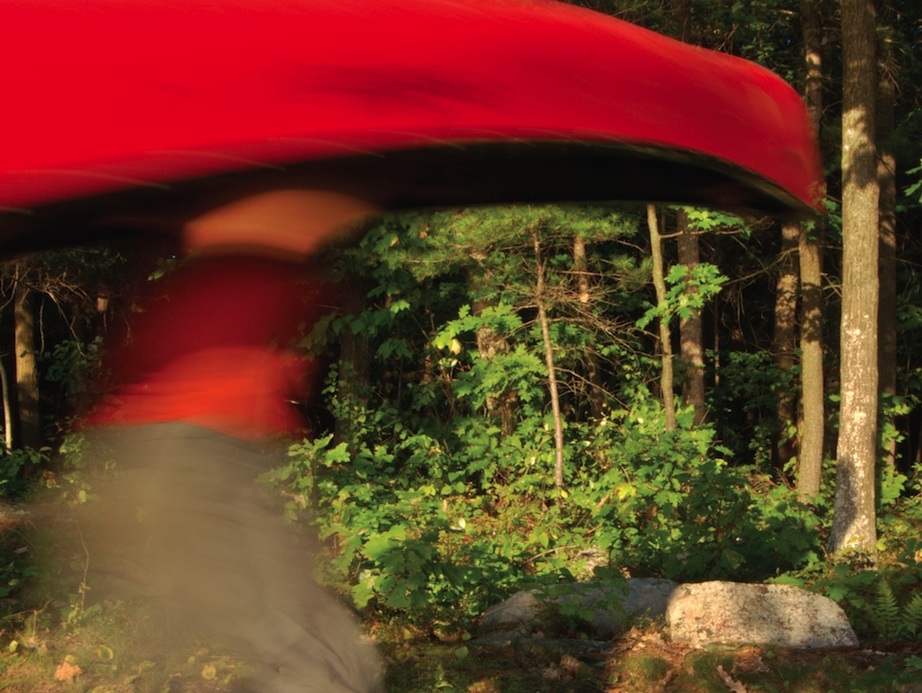Going ultralight on your next canoe trip doesn’t have to break the bank and it will definitely save your back. Is that two-kilometer portage into you favourite lake tougher every year? Do you struggle to pack up your mess and break camp by the crack of noon? The affliction is common, and the solution simple: lighten your load. Dump the stuff you don’t need and find the lightest reliable gear.
The first myth that needs to be dispelled is that going light means shivering on a bed of rocks with a few spork fulls of cold granola in your belly while insects strip your sunburned flesh to the bone. With the light, tough gear available today—and with some disciplined packing—you can carry less and have an easier time going further and faster, without sacrificing your comfort or safety.
When I’m solo tripping, my homemade wood strip canoe, food and gear (including bear bangers, flares, throw rope and a water filter) weigh less than 50 pounds together. Impossible you say? Here’s how:
Minimize
Leave non-essentials at home. Ask yourself, “Could I die if I don’t take this?” If the answer is no, try going without it. You probably won’t miss it, but you might wind up with a pack many pounds lighter. Of course, if your thing is photography, take the monster zoom lens, if you like to read, take War and Peace (softcover). But when it comes to things you took last trip and didn’t use, be ruthless.
Upgrade
Once you’ve pared your pack down to essentials you’ll have an easier time affording an equipment upgrade. When replacing gear, seek out the lightest, highest-quality gear you can afford and start with the heaviest items: tent, pack, grill or stove, sleeping bag and mat.
Throw off your yoke
You can carry a 45-pound canoe forever, but a 65-pounder gets heavy after a few hundred meters. Ultra-light composite boats (carbon or Kevlar) are expensive, but if used with respect, your grandchildren will someday find them as easy to carry as you do. A weight savings of 20 pounds in the hull is as good as in the pack.
Leave the water at home
Your food pack shouldn’t weigh more than your canoe. You can get an ample daily ration of 3,000 nutritious calories from 800 grams if it is dehydrated. Buy a dehydrator, make your own or use a convection oven and see how easy it is to remove water that is quickly replaced at your campsite.
Fatten up
Fats contain more than twice the calories per gram as carbohydrates or proteins. Think of bacon as a critical weight saver.
Super size
Do you ever finish a trip with your food pack still half full? Go ahead and factor in some insurance supplies, but don’t overestimate your appetite. Measure or weigh your food so you learn what you really eat and pack accordingly. Just 125 grams of pasta per person is plenty for a main course. You won’t have to eat your boots.
Simplify
Put your wannigan in the living room and stick a coffee table book on it. You can eat very well with a few simple kitchen implements. Use a roll-up cutting board for prep and leave the plates at home (using a bowl for pancakes just makes it easier to pool more syrup).
Find the breaking point
Saws and hatchets excel at drawing sweat and blood from your body, but aren’t necessary for collecting the size of firewood that is best for cooking.
Roll out the barrel
For food storage, use a liner that keeps water out and odours in. I’ve had success (no bears or mice) with vinyl roll-top bags and the Ursack, a Kevlar bag with an odour-resistant liner. Add a few meters of (light) rope to hang your food from a tree overnight and you can defend yourself from the biggest heavyweight bully of canoe tripping: the food barrel.
Eliminate redundancy
Make a list of the gear you take on a trip and then take a step back and check for redundant items. Do you really need a rain hat and a sun hat? Jackknife and multi-tool? Headlamp and flashlight? Grill and stove?
Paddle
A paddle that will be lifted thousands of times each day is an important place to save weight. Just remember, a broken paddle is worse than a heavy paddle—make sure it’s strong.
Pick your battles
If you trip with caffeine devotees, stop short of jettisoning their brewing device; there are some battles you will lose, even when you win.
This article first appeared in the 2009 Late Summer issue of Canoeroots and Family Camping magazine. Read the issue in our free iPad/iPhone/iPod Touch App or Android App or read it online here.
